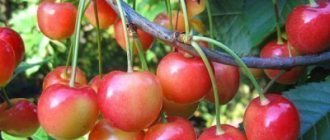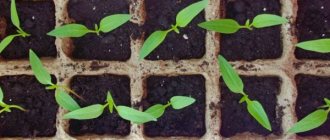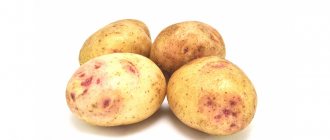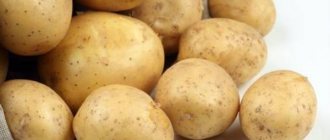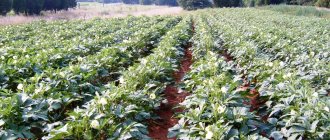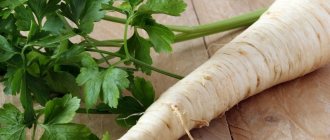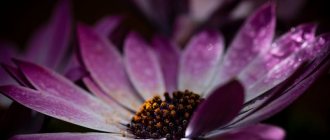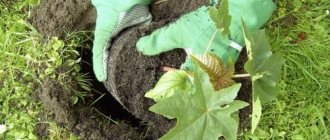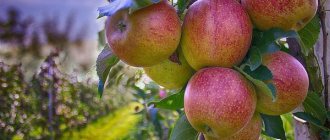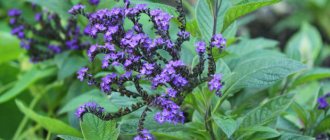How to prepare for storage
To ensure that the shelf life of dill seeds is as long as possible, the material should be properly dried. This will help the seeds to avoid loss of quality during storage.
Preparation should be carried out in compliance with the following rules:
- It is recommended to collect the seeds after they are fully ripe so that they will germinate in the future.
- It’s time to cut off the dill umbrellas when the seeds darken and turn from green to brown.
- It is recommended to lay out the cut elements in the fresh air under a canopy or in a dry room. Avoid exposure to moisture and direct sunlight.
- After a few days, the seeds acquire a dark color and become completely dry. This is a sign of their readiness for further storage.
- They should be separated from the umbrellas using a sieve with large holes.
- Dried seeds for germination can be stored in fabric bags or a glass jar that does not need to be tightly closed. Various options are also allowed, the features of which are described below.
Tips for collecting seeds
As a rule, they begin to collect seed when the inflorescences dry out and harden: the fruits turn brown.
It’s better not to wait until the seeds are completely dry, as the wind can easily tear them off, but to finish drying them after they’ve been collected. Before harvesting, be sure to check the inflorescences for signs of disease, damage by pests or mold. Completely healthy, undamaged specimens are suitable for storage. Interesting! It is better to carry out work on dry, windless days in the morning, after 10 o’clock, when the dew has already dried. This will help avoid large losses of seeds. Wet plants may begin to rot while drying.
The umbrellas are carefully cut off, leaving a stem 10 cm long. Then they are collected into bouquets of 10-15 pieces and tied. Dried hanging with inflorescences down.
Let's prepare basil for the winter. Let's save the scent for winter
Storing dill
Dill is unpretentious to storage conditions; it can be easily dried or frozen.
At room temperature
At room temperature, dill and parsley cannot be stored for a long time without special drying or the use of water.
Fresh in water at room temperature
If you need to save a small amount of seeds for several days, the plant should be trimmed and the umbrellas with grains should be placed in a container with water. It is recommended to leave stems 1 cm high from the bottom of the bush.
The temperature in the room must not exceed +25 degrees. It is important to avoid direct sunlight.
Dried dill
It is recommended to dry a considerable amount of grains. These preparations do not lose their aromatic properties. This doesn't require a lot of space. The extracted grains should be thoroughly rinsed with water and placed on a cloth or paper towel in a thin layer. Dill should be left to dry in a dry place, not in the sun or under a lamp.
This preparation should be stored for 8 months until the next harvest. It is recommended to use bags, glass or wood jars.
Dried dill seeds
How to preserve dill for the winter
Not only the shelf life of the beneficial and nutritional properties, but also the taste, which you should definitely pay attention to when creating certain dishes, depends on the chosen method of storing the seeds and green parts of dill. In some cases, aromatic dried herbs are more suitable, in others you should pay attention to the freshness of the defrosted product
Because of this, it is worth studying the step-by-step algorithm for each possible storage option.
Find out if you can freeze dill in the refrigerator.
Dried
If you need to preserve greens for a long time without freezing, then the first thing that comes to mind is drying them. The simplicity and accessibility of the process itself makes it very popular among housewives, and if the required sequence of actions is followed, no problems should arise.
There are also many drying options:
- on the street under gauze (preferably under a canopy);
- in the microwave;
- in an oven or special dryer at a temperature not exceeding +60°C.
The dried herb is poured into a fabric bag and stored in a dry and dark place for further storage, where the dill can easily lie until next year. We recommend that you learn more about how to dry dill at home for the winter.
Collecting dill seeds for planting next year or for culinary use begins only when they change color and begin to rustle. Umbrellas need to be carefully cut from the bush and laid out on a clean surface so that they dry a little more. In comparison with the green part of the plant, when drying seeds it is better not to use technical devices, since they may well burn the seed and it will lose all ability to germinate.
Did you know? People call dill by a variety of names: “kopchor”, “koper”, “krop” and even “tsap”, but in fact these are all different names for one useful plant, used not only in cooking and medicine, but also in the production of alcoholic beverages.
Frozen
Freezing dill is the most popular harvesting method, which, with a minimum of physical effort, provides a large amount of always fresh herbs that can be stored much longer than preparations prepared by other methods. The sequence of all actions in this case is as follows:
- Trim the petioles of prepared and peeled dill sprigs.
- If necessary, finely chop the sprigs and place the dill on a tray for quick freezing (if you do not plan to chop the plant, you can also lay out whole sprigs).
- After the greens are well frozen, transfer them to portioned containers (it is most convenient to use plastic zippered bags) and put them in the lower compartments of the freezer for further storage.
Important! Before placing in the freezer, you must thoroughly dry all the dill, since if there is moisture on it, the individual parts will stick together into one common lump. It is advisable to defrost the workpiece as rarely as possible, otherwise the greens will quickly lose a significant part of their nutritional properties.
In the refrigerator, in the vegetable compartment
Storing cut dill in a regular vegetable compartment is suitable for cases when there are only a few plants and you plan to use it in the very near future. Dill often ends up on the bottom shelf at the height of the season and can remain there for at least two months after harvest. At the same time, within a month you will notice partial wilting of the branches, and after a few more weeks they will begin to dry out, losing all attractiveness.
We recommend learning how to make dill oil.
Freezer storage
In the case of large dimensions of the chamber, the housewife has the opportunity to freeze enough preparations, in which many vitamins and essential oils are saved throughout the entire storage period. Dried seeds do not retain useful components in such a volume.
First you need to sort out, wash and dry the seeds. This must be done to remove excess moisture, which causes them to stick together in lumps. You should first sort these elements. The prepared ingredient can be frozen in the following containers:
- plastic containers;
- plastic bags with air released from it in the process;
- small ziplock bags.
It is allowed to make ready-made seasonings for preparing soups, dishes with potatoes, cabbage and cereals with spiced grains and butter. To prepare these cubes, you will need silicone or plastic freezing cube molds.
Expiration dates and on what day do 22 vegetables sprout?
Cucumber seeds and each crop have their own shelf life. This concept refers to the lifespan of the seed. Often, beginning gardeners confuse the shelf life indicated on the seed package with the expiration date during which the seeds retain a certain percentage of germination.
Factors affecting seed germination before planting
Seed germination refers to the percentage of germinated seeds . The shelf life depends on the following factors:
- indoor air humidity;
- temperature;
- percentage of moisture in seeds;
- oxygen.
As a rule, seeds are stored in a dark and dry room with good ventilation . Low humidity ensures that the seed material does not germinate ahead of time, and good ventilation helps maintain the vital activity of the seeds. Without access to oxygen, they die and may not emerge at all.
For full germination, the presence of these components is necessary:
- humidity;
- a certain temperature.
cucumbers
For good cucumber germination, it is necessary that the room temperature be from +19 to +25 degrees . At this temperature regime, seedlings can be expected on the fifth day after planting. In addition to the temp. air and soil must also be taken into account.
Tomatoes
Tomato seed material is stored for 5-6 years . At temp. germination +22+25 degrees will sprout on days 5-7. To increase germination rate, seeds can be pre-soaked in a growth stimulator.
Watermelon
This melon crop remains viable for 6 to 8 years . Germinates at a temperature of +20+30 degrees . The germination period is two days.
Watermelon
Before storing watermelon seeds, they must be thoroughly rinsed to remove any sweet juice and placed on a paper towel to dry excess moisture. Collect dry seeds in a cloth bag and store in a room with moderate humidity, excluding exposure to direct sunlight and light.
Beans
Remains viable for 5-6 years . Germinate at +10+11 degrees . Shoots will appear on the 10th day.
To collect seeds for storage, bean pods must be collected in the morning to prevent cracking. Seed material must be thoroughly dried before packing for storage, turning them over several times during the drying process. Packed in cloth bags. Store in a well-ventilated area.
Peas
Peas germinate for 5-6 years . Germinates at +10+11 degrees on the 7th day. In the process of peeling the pods, it is necessary to immediately discard the darkened ones. Then spread the collected peas in a thin layer on paper and dry for six days.
Then, once dried, they are packaged in a paper envelope or cloth bag and stored in a room with moderate humidity at room temperature.
Shoots appear +20+30 degrees . This melon crop has a shelf life of 6-8 years .
Germinate at +20-30 degrees. Shoots appear on the 8th day. Before packing for storage, the seeds must be thoroughly dried to avoid spoilage or premature germination. The material is placed in glass containers. The humidity inside the container should be 6%.
Eggplant
Remains viable for 3-5 years . They germinate at +20+30 degrees on the 10th day. Rinse the collected seeds well, dry thoroughly, and pack in cloth bags. Storage temperature +10-15 degrees.
Eggplant
Pumpkin, zucchini
They germinate at +20+30 degrees for 10 days. Germination is maintained for 6-8 years .
It is better to dry the collected pumpkin or zucchini material in the fresh air, but covering them from direct sunlight. During the drying process, the seeds must be turned over. Store at +10-15 degrees in a well-ventilated area. Collected seeds should not be washed and the partitions removed.
Cabbage
The shelf life of seeds is 4-5 years . Germination at +20+30 degrees .
To test cabbage seeds for germination, place them in damp gauze for five days. You need to make sure that the moisture does not evaporate and that the gauze is always damp. On the fifth day, the hatched seeds can be sown for seedlings. Shoots appear on the 10th day. Store in a room with a humidity of 55% and a temperature of 0 +5 degrees.
Sprouted cabbage seeds
Corn
Germinates on the 7th day at a germination temperature of +20+30 degrees . For planting, only large, undamaged seeds are selected and kept in a 5% saline solution for 5 minutes to check for germination.
Only those that have settled to the bottom during the soaking process are planted. Remains viable for 2-3 years .
Carrot
Has a shelf life of 2-3 years . They sprout on the 10th day at a germination temperature of +20+30 degrees .
To do this, you need to dissolve 1 tablespoon of ash (level spoon) in 1 liter of water. The water temperature should be at least 30 degrees.
Soak the seeds in a rag bag in this solution for 24 hours. After soaking, rinse the seeds and place them in the refrigerator for 5 minutes to harden, dry them and start sowing.
Carrot
Beet
Beets remain viable for 1-2 years . Seeds of both sugar and fodder sprout after 8 days, at a germination temperature of +20+30 degrees .
Storage temperature 14-16 degrees. Air humidity 50-60%. This temperature and humidity conditions are also suitable for crops such as corn, radishes, radishes, turnips and onions.
Parsley
Remains viable for 3 years . The optimal germination temperature is +20+30 degrees . Shoots appear on the 14th day. Storage conditions are similar to storage conditions for beets.
Before planting, it is recommended to rinse parsley seeds with hot water to wash away the essential oils that cover the seeds. Water temperature +50 degrees. Soaking will significantly speed up the germination process.
Onion seeds are suitable for planting for 3-4 years . Germinates at a temperature of +20+30 degrees , sprouts on the 12th day.
Onion sprouts
Before sowing, seeds must be checked for germination. 14 days before planting, wrap them in a damp cloth and leave them in a warm room. During this time, keep the napkin slightly moistened so that the fabric does not dry out.
After two weeks, pour the hatched seeds into a rag bag and immerse them in boiling water for 15 minutes, and then dip them in cold water for 1 minute. After this, keep for another 24 hours in a damp bag at room temperature.
Pepper
Remains viable for 3 years . Shoots appear on the 15th day, at a germination temperature of +20+30 degrees . Storage temperature +5 degrees. Air humidity 55-60%.
Experienced gardeners have noticed that medium-sized seeds can sprout better if they are previously disinfected with a 2% solution of potassium permanganate and kept for 5 hours in an ash solution.
The solution is prepared as follows:
Dill
Remains viable for 2-5 years . Germinates at +10+12 degrees .
Dill seeds will produce better seedlings and lush greenery if the seeds are soaked in hot water for 72 hours before planting. Place the seeds in a cloth bag and place in hot water. During the soaking process, the water must be changed at least 5 times.
Rhubarb
The shelf life of the seed is 2-3 years . Germinate at +20+30 degrees . It sprouts on the 14th day.
Before planting in open ground, it is recommended to soak the seeds for 24 hours to swell, and then wrap them in a damp cloth for germination. Rhubarb grown from seeds will produce good yields only after 2-3 years.
Radish
Retains germination for 4-5 days . Germinates at a temperature of +20+30 degrees for 7 days.
Before sowing, it is necessary to sift the seeds through a 2 mm sieve to calibrate the largest ones for planting. Soak the selected seeds for 48 hours. This must be done to speed up germination.
Salad
The shelf life of seeds is 1-2 years . Germinates at a temperature of +20+30 degrees for 10 days. Seed germination depends on their size and density.
Seed storage limits
Among gardeners, there are several versions of how long dill seeds can be stored for use in medicinal decoctions, cooking, or growing fresh dill.
Most often, seeds retain the ability to germinate after 2-3 years. After this period, germination rate decreases. Some individual seeds germinate even after 6 years. To plant dill, experts advise using seeds with a shelf life of 1-2 years.
To brew them for treatment or use them in cooking, as well as for pickling, the ingredient can be stored for up to 6 years.
Important! The longer the seeds are stored, the less beneficial properties they retain.
How to brew dill seeds
The healing properties of dill have been known to mankind for a long time. The healing effect of this plant is mentioned in Egyptian papyri; the ancient healer Ibn Sina (Avicenna) also widely used it in his practice. In particular, decoctions and infusions of dill seeds helped people suffering from diseases of the skin, digestive tract, respiratory tract, and urinary system. Dill seed was brewed in different ways, depending on what they were going to treat. These recommendations should still be followed today.
Instructions
- For headaches and intraocular pressure. Pour one tablespoon of dill fruit into a glass of water (200 ml), cover with a lid and let steep for 15-20 minutes. Strain and drink throughout the day.
- For edema, cystitis, pyelonephritis, urolithiasis, urethritis (as a diuretic). Take 3 teaspoons of dill seeds, pour into boiling water (250-300 ml), do not boil, but immediately close the lid and wrap the bowl with the broth in a warm scarf or scarf. Let it sit for 1 hour. Strain and take half a glass 3 times a day, preferably before meals. The healing effect of this infusion will increase if you add burdock and chicory root, rose hips, red rowan and black currant (one part of all ingredients) to the dill seeds
. - To increase lactation in nursing mothers. Grind the dill seed into powder. Pour 1 teaspoon of powder into boiling milk (200 ml), cook over low heat for 5 minutes. Wait until it cools down, strain and drink in the morning on an empty stomach.
- With rapid heartbeat, nervous excitement, stress. Brew two tablespoons of dill seeds in 0.5 liters of boiling water, hold in a water bath for 30-40 minutes, cool, strain, drink in small sips throughout the day. To enhance the therapeutic effect, you can add
motherwort herb, valerian root and caraway fruits to the dill seeds - For hemorrhoids and fissures in the anus. Brew 3-4 tbsp. spoons of crushed dill seeds in a glass of boiling water, let it brew for 1-2 hours, lubricate the problem area with a cotton swab dipped in the infusion (a slight burning sensation is possible).
- For urinary incontinence in children. Pour half a teaspoon of dill seeds into boiling water (200 ml), do not boil. Cover with a lid and wrap in a warm scarf, let sit for 2 hours. Strain and give your child 1/3 glass after dinner. It’s good to
add dried cornflower flowers to the dill seeds Elderly people with the same problem should triple the dose (i.e. brew 1 tablespoon of dill seeds in a glass of water and drink it all at once after dinner). - For upper respiratory tract disease, dry cough. Brew two teaspoons of dill seeds with a glass of boiling water, gargle while warm several times a day.
- For insomnia. Take 1 tbsp. spoon of dry dill seeds, pour a glass of boiling water or hot milk, cool, strain, add flower honey (to taste) and drink an hour and a half before going to bed.
- KakProsto.ru
Possible storage difficulties
The quality of the material depends on how long dill seeds are stored for planting and storage conditions. To prevent the seeds from spoiling, you need to create the most favorable environment around. The following factors usually influence shelf life:
- humidity level;
- temperature regime;
- How big is the risk of exposure of raw materials to sunlight?
Attention! When the humidity level increases to 60% and the temperature exceeds 10 degrees in the warehouse, the shelf life decreases.
If moisture gets inside the storage container, the aroma and volume of nutrients that are necessary for a good plant germination rate are lost.
This is what quality seeds look like
Features of storage conditions
Due to improper storage conditions, fungus may grow on the surface of the seeds. To avoid this, you should regularly ventilate the room. It is recommended to store future crops in specially prepared containers:
- glass jar with an airtight lid;
- a tin container that closes tightly;
- bags that are made from breathable fabrics such as linen or cotton;
- paper bags if stored for 6-8 months.
Proper storage helps preserve the benefits of the spice
Difficulties
During seed collection and storage, diseases and fungi may occur due to:
- collecting raw materials in too dry weather conditions;
- high indoor humidity;
- poor ventilation;
- irregular ventilation;
- not completely dried material.
Poor germination in soil is ensured when:
- artificial drying under high temperature conditions;
- destruction of reserve proteins, which are necessary for pipping, which occurs due to non-compliance with the rules of temperature and humidity.
To obtain high-quality material, it is necessary to take into account all the characteristics of the crop and create favorable storage conditions.
Concept of germination
The germination of a crop determines the quality of the seed material, which means the possibility of using it for planting. Checking this indicator is presented as follows:
- Prepare a container for “planting” seed material. For these purposes, use a regular plastic lid with a small amount of cotton wool inside.
- Ten seeds are selected. They are placed in prepared containers, after adding ordinary water (not chlorine-containing). The bookmark should not float!
- Water is added periodically until the sprouts emerge.
- After time has passed, the amount of seed material that has sprouted is visually determined.
If the sprouts came from 3 seeds, then the germination rate is considered to be 30%. There is no need to carry out mass planting from this pack or batch. This usually happens when the seeds have expired. If the indicator reaches 50% or more, then the seed material is suitable for use. Seeds from well-known manufacturers have a germination rate of at least 80%.
Sprouted seed bank
What happens if deadlines are missed?
If cleaning deadlines are missed, the following consequences are possible:
- The greenery will “outgrow” and begin to fade. Dill will lose its presentation.
- The greens will wilt completely. Dry dill stems can also be used - however, the benefits from them are several times less than from living greens.
- Overgrown greens will be more difficult to prepare for the winter.
However, in general, the consequences of “outgrowing” dill are less than those of immaturity. Therefore, if you doubt whether it’s time to harvest the dill, then let it stand for another 5-7 days.
How long do seeds last?
At the end of autumn, after harvesting, prudent owners of summer cottages and garden plots are already beginning to think about next spring and the selection of seeds for the next season. But before purchasing them, you need to familiarize yourself with the storage conditions.
Shelf life
It should be remembered that successful germination is guaranteed only with proper selection and maintenance of seeds. Failure to follow the rules will result in decreased germination, poor quality vegetables, or damage to plants by all kinds of diseases. Thin, unripe and small specimens are poorly stored, so they must be discarded immediately. Common reasons for insufficient germination and development are extreme heat or excessive humidity in the room where the planting material is located, since due to its hygroscopicity it is able to absorb more moisture than it releases.
If storage conditions meet the standards, then the same amount of moisture is released as it is absorbed. Healthy “breathing” is carried out, depending on individual properties, which are characterized by the content of substances such as crude fat and starch, as well as the size of the planting material and its density. Therefore, seeds are best stored in a cool room in thick paper bags in glass or plastic containers. They also feel good in canvas or linen bags, bags, and sealed plastic bags.
Manufacturers always write shelf life on the label, so you need to carefully study the information, compliance with which will contribute to the rapid growth and full development of seedlings. If the seeds were stored correctly, then high germination of various crops is guaranteed in the following period:
- beans, legumes – 4-6 years;
- corn, onions, onions and celery - 1-2 years;
- radishes, rutabaga, tomatoes, different types of cabbage - 4-5 years;
- zucchini, cucumbers and melons such as melons and watermelons remain viable for 6-8 years;
- carrots, peas, bell peppers, dill, fennel, lettuce – 3-4 years;
- eggplants, cauliflower, turnips, kohlrabi, beets – 3-5 years;
- sorrel, parsley seeds, leeks, coriander, spinach are stored for 2-3 years.
These are indicative deadlines that gardeners and gardeners should adhere to. But these periods are not always final. If the planting material is well dried, temperature changes will not harm it. However, critical humidity, negatively affecting the breathing rhythm, can provoke the appearance of mold, as a result of which the shelf life will be greatly reduced. There are varieties of crops that are able to maintain normal activity for another 3-5 years beyond the warranty period, with ideal maintenance, and certain types of tomatoes - up to 10 years.
If seeds are purchased in winter, they are immediately placed in a cool place, because in a warm room, condensation that collects due to temperature differences can increase the humidity of the planting material. In areas with a cold climate, it is better to purchase seeds harvested from last year, since due to the short summer they have to be collected immature, which reduces the germination of seedlings. Further ripening and storage of seeds for planting is carried out indoors. They can be used for next year.
Chemical composition and characteristics of dill seeds
Dill seeds are a storehouse of useful substances; they contain the following components:
- iron;
- copper;
- phosphorus;
- potassium;
- selenium;
- magnesium;
- vitamins C, A, PP, group B;
- phytoncides;
- amino acids.
100 g of product contains 304 kcal - a fairly high figure for a plant, but taking into account consumption in small quantities, weight does not gain when consumed.
Dill seed is oval, brown or reddish, with a characteristic pungent odor that intensifies when rubbed. The taste is spicy and pleasant.
View this post on Instagram
Publication from
